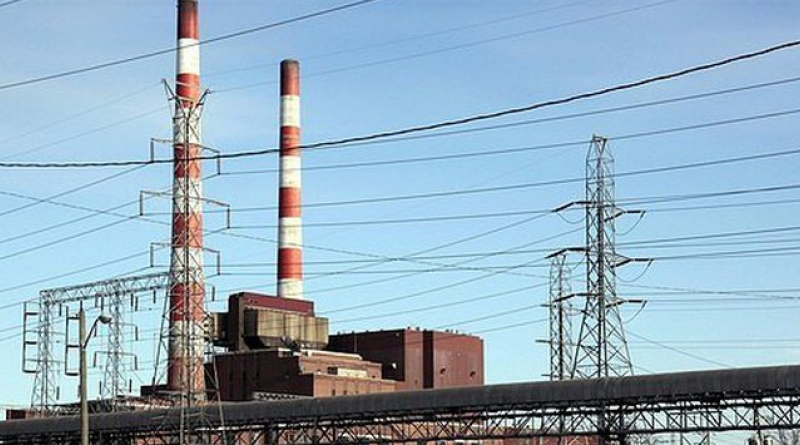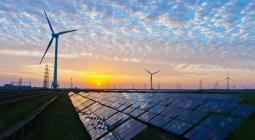Analysts' inaccurate cost estimates are creating a trillion-dollar bubble in conventional energy assets.

The following is a contributed article by Tony Seba and Adam Dorr, founder and research fellow, respectively, at RethinkX.
For the past 10 years, there has been a conventional energy bubble gathering steam. The reason is all too familiar. Just as the credit rating agencies ignored actual market data in the buildup to the subprime mortgage crisis, mainstream energy analysts have ignored market data in the valuation of new conventional power plants.
The U.S. Energy Information Administration (EIA), the International Energy Agency (IEA), Wall Street banks and other analysts all assume that a newly-built coal, natural gas, nuclear or hydro power plant will be able to generate the same amount of electricity year after year from now until 2040 and beyond, with the same consistent sales revenue. In essence, these analysts are pretending that conventional power plants will never face competition from solar, wind and battery technologies (SWB), despite all evidence to the contrary. This assumption is patently false.
By including imaginary electricity generation and sales revenue in their calculations, mainstream analysts have mispriced and overvalued not just coal, natural gas, nuclear and hydro power plants themselves, but the mines, wells, pipelines, ports and refineries that support them. Most of these assets will be stranded by solar, wind and batteries over the next 10 to 15 years.
LCOE calculation errors
Our research shows that much of the problem can be traced to a fundamental error in the calculation of levelized cost of electricity, or LCOE — a key metric that investors and policymakers use to compare energy technologies.
The value of any asset depends on how fully it is utilized. A taxi that drives 100,000 miles per year has a much lower cost per mile than one that is only driven 10,000 miles per year. And similarly, a coal power plant running all day and night at full capacity will have a much lower LCOE per megawatt-hour than one which only runs 10% of the time. This is especially true of newly-built power plants, which must repay their fixed capital costs.
Virtually all mainstream analysts assume that every conventional power plant's "capacity factor" — and thus electricity generation and sales — will remain high and constant year after year for a power plant's entire decades-long lifetime. This is a fundamental error. Capacity factor will not remain high or constant but will instead decline as conventional power plants are outcompeted and disrupted. We have already seen this happen to coal in the United States.
Since 2010, half of the U.S. coal fleet has been decommissioned and the market capitalization of the coal industry has fallen by more than 99% because U.S. coal has already been disrupted — first by natural gas, and now by solar and wind. Yet, despite this clear downward trajectory of disruption and collapse, the EIA's LCOE calculations assume that any newly-built coal power plant will have a capacity factor of 85% every year, from their first year of service through 2040 and beyond.
In reality, the average capacity factor of U.S. coal power plants has declined, from nearly 70% in 2010 to just 40% in 2020. Virtually all mainstream analysts are making this error and posting similar LCOE figures as a result. By severely overestimating how much electricity conventional power plants will be able to sell during the 2020s and 2030s, they have drastically underestimated how much each unit of electricity will cost, and thereby misrepresented both the value and risk of conventional energy investments.
When we recalculate LCOE, changing nothing but capacity factor, we see that by 2015 the real LCOE of coal was 50% higher than the EIA reported, and that by 2020 the corrected value was more than 3 times greater than the EIA claimed. Looking ahead, as capacity factor continues to fall, the LCOE of coal rises accordingly, so that by 2030 the corrected value is 9 times greater than the EIA's current projection.
The story for gas, nuclear and hydro power is much the same. Corrected gas LCOE is 60% higher than the EIA reported for 2020, and 5 times higher than reported for 2030. Nuclear is 175% higher than reported for 2020, and 13 times higher than reported for 2030. Hydro is 230% higher than reported for 2020, and 9 times higher than reported for 2030.
The EIA, IEA and other analysts who have miscalculated LCOE are misrepresenting the value of conventional energy assets in much the same way that credit rating agencies misrepresented the value of subprime mortgage assets. We know how that ended. The value of U.S. subprime mortgages before the crash was $1.3 trillion. At least $2.2 trillion has been invested worldwide in conventional energy assets since 2010 under the false pretense that they are low risk investments, and the global financial bubble in these assets is still expanding rapidly.
Rethinking energy investments
Policymakers, regulators, civic leaders, ratepayer and taxpayer advocates, asset managers and other investors and decision-makers must reconsider all new investment in conventional energy assets in light of increasingly formidable competition and disruption from SWB. This means they should assume that every conventional power plant will be a peaker — without the ability to charge peaking prices. Decision-makers must demand that analysts calculate LCOE on the basis of actual, market-based assumptions for capacity factor and dynamic, realistic projections for all variables of their LCOE calculations that include the reality of the disruption ahead.
Government regulators, including public utility commissions that ostensibly approve power plant investments on behalf of the people, should not enlist captive ratepayers or taxpayers to subsidize, insure, or provide a backstop for any new or existing investments in conventional energy assets, including power plants and their value chains.
The disruption of energy by solar, wind and batteries is inevitable. The longer we wait, the more difficult it will be to diffuse the Great Stranding of the 2020s and 2030s. The time to course correct is now.
Correction: A previous version of this opinion piece misnamed the authors' company.
IEA
UTILITY DIVE





